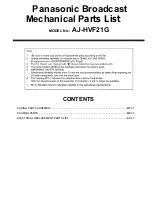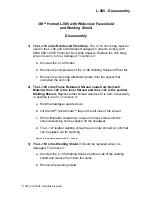
15
Subject to technical modifications
22PD differential pressure sensor /
Commissioning
Commissioning
Standard mode
In standard mode, the device reads out the pressure transmitter and calculates
the differential pressure depending on the selected range. The differential pres-
sure is displayed on the LCD and is provided as current or voltage at the ana-
logue output. The output value is updated once per second.
To measure and display the differential pressure correctly, the pressure present
at the HIGH connection must be higher than that at the LOW connection. When
the pressure connections are switched, the sensor always outputs 0 V or 4 mA.
When this is the case, it is possible to switch the pressure connections in the
menu. It should be noted that, for correct measurement, the connecting cable
marked HIGH must always be connected with the HIGH pressure transmitter,
and the cable marked LOW must always be connected with the LOW pressure
transmitter.
If the LOW connection remains open to ambient pressure, then the HIGH
connection is used to measure a positive pressure.
To achieve a positive output behaviour, the pressure applied at the HIGH
connection for bidirectional operation should be higher than that at the LOW
connection. Negative pressure is displayed when the pressure at the HIGH
connection is lower than that at the LOW connection.
The differential pressure sensor shows a linear behaviour with respect to the
differential pressure measured and the corresponding signal output value. This
means for example that, for a 0…10 bar sensor in uni-directional operation, 0 bar
= 0 V or 4 mA and 10 bar = 5 or 10 V or 20 mA, while in bi-directional operation
−10 bar = 0 V or 4 mA and +10 bar = 5 or 10 V or 20 mA. 0 bar corresponds in
this case to 2.5 or 5 V or 12 mA.
The output value can be influenced by device settings, such as the time for
signal damping or average value formation.
The setting of the average pressure value calculations defines how many mea-
sured values are applied for averaging and thus as the basis for the output val-
ue. If, for example, the average pressure value calculation is set to 30 seconds,
then 30 one-second measured values are saved and averaged to form the out-
put value. The next second adds a new measured value and deletes the first in
the series in order to calculate a new 30-second average for the output. The
output is updated every second with a new average value. The user menu can
be applied to set average value from 1 to 60 seconds.
In standard mode, the device also monitors the
<DOWN>
,
<ZERO/UP>
and
<MENU>
buttons and initiates corresponding measures. The buttons are used
to access the user menu. The device also monitors the VOLT/mA switch to
determine the suitable output signal scale. The user menu can be used to set
the voltage range to either 0...5 V or 0...10 V.
Auto-Zero calibration
An automatic zero-point calibration of the sensor can be initiated by pressing
the internal
<ZERO>
button and holding it down for a minimum of 3 seconds.
Once both pressure connections are near zero, the device calculates with a new
zero point. Automatic zero-point calibration can also be initiated by holding the
ZERO terminal for at least 3 seconds on ground potential by pressing the
remotely mounted Zero switch.
Generally speaking, performing a measurement range calibration in the field is
not recommended. This holds true unless a high-quality calibration standard
with low differential pressure ranges is available and an unchanging sensor
temperature can be ensured during the calibration procedure.


































